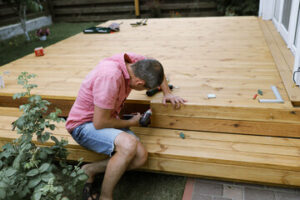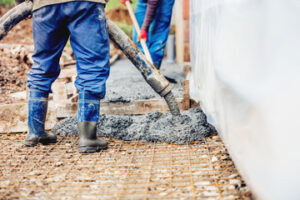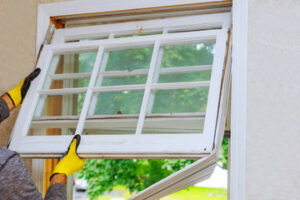Solar incentives are becoming more dynamic than ever before. These programs no longer follow a one-size-fits-all model. Instead, they adapt to local needs, climate conditions, and energy usage habits. This flexibility allows more households to join the solar movement with confidence. Contact Montana Solar for professional help.

Governments and energy developers now explore layered rewards systems. Consumers can earn credits based on both energy production and energy conservation. These dual-incentive systems promote storage solutions along with generation. It shifts the focus from just installing panels to managing consumption wisely.
A new trend is performance-based solar compensation. Rather than rewarding initial installation alone, systems are monitored long-term. Households receive rewards for maintaining high efficiency and uptime. This encourages proper system maintenance and long-term sustainability.
Seasonal incentives are also gaining popularity. These allow increased credits during months of peak production. Families who install solar before summer or dry seasons benefit more. The system helps balance national grid loads when energy demand surges.
Some solar incentive programs are now tied to building design. Energy-efficient homes with solar integration receive amplified benefits. The more sustainable the house design, the greater the return. This promotes holistic environmental planning, not just add-on panels.
Communities are beginning to pool solar energy in shared grids. Members earn incentives based on total group contribution. Households without roofs suitable for solar can now participate. It creates equity in energy benefits across diverse living spaces.
Time-based rewards are reshaping energy habits at home. Incentives rise when excess solar is exported during grid stress hours. This pushes users to align energy use with the needs of the broader network. It transforms households into micro-utilities that support national stability.
Solar incentives are also being combined with education access. Some regions offer scholarships for students in solar homes. Others give educational grants for children of green-energy adopters. It creates generational awareness about renewable power from a young age.
Incentives are expanding into job creation and training pathways. Those who install solar systems now access vocational learning credits. It turns home improvement into a career gateway. This helps develop local talent pipelines in the clean energy workforce.
Tax offsets are evolving with solar ownership duration. Instead of a one-time rebate, homeowners now receive staggered credits. These increase based on the number of years the system is in use. This approach rewards long-term commitment rather than quick adoption.
Solar-integrated smart homes earn advanced automation bonuses. Smart thermostats, appliances, and energy tracking tools contribute to incentive calculations. Homes that demonstrate lower carbon output are prioritized. This aligns environmental goals with everyday technology.
Microinverter-based systems receive separate encouragement. Because they offer modularity and resilience, incentives are boosted for these designs. It reduces dependency on single points of failure. Households are more likely to produce energy even during partial outages.
There are also new incentives tied to local climate adaptation. Areas prone to extreme weather get enhanced solar support. Systems designed for storm resistance or elevated positioning are rewarded. These programs help communities build climate-ready energy infrastructure.
Peer-to-peer solar trading is now linked with incentives. Households can sell their excess energy to neighbors. Governments reward active sellers and buyers within these microgrids. It stimulates local energy circulation while reducing grid dependency.
Electric vehicle integration now affects solar incentive levels. When solar powers a home and charges an EV, the combined effect earns higher benefits. The cleaner the transport system, the better the overall reward. It encourages a full-circle renewable lifestyle.
Recycling programs now play a role in incentive calculations. Homes that return old panels, batteries, or wiring are rewarded. Reuse and disposal accountability becomes part of the equation. This supports circular economy efforts within the renewable sector.
Solar incentives are being gamified through digital platforms. Users track daily output and earn points or ranks. Those who optimize usage patterns gain digital rewards. These can be redeemed for upgrades, community perks, or further installations.
Agricultural zones with solar installations get dual-production benefits. Farms that combine solar with crops earn both food and energy credits. Incentives support sustainable farming models using solar canopies. It transforms empty spaces into multipurpose ecosystems.
High-altitude homes are getting tailored solar benefits. Due to stronger sun exposure, these areas maximize solar potential. Special bonuses are issued for early adoption in such places. It recognizes the efficiency gains from unique geographical positioning.
Solar integration into water systems is now incentivized too. Households with solar-powered pumps or filters get conservation credits. This merges clean energy with clean water solutions. It’s especially beneficial in water-stressed communities transitioning to green energy.
Homeowners are now rewarded for design aesthetics in solar usage. Panels integrated into rooftops invisibly earn a style bonus. The goal is to encourage seamless, attractive energy design. This reduces the stigma of bulky or unattractive installations.
New homeowners are being targeted with first-solar grants. These help cover early installation costs before mortgage finalization. Solar-readiness is now a key part of property valuation. Incentives drive buyers to prioritize renewable homes from the beginning.
Some digital wallets now store solar energy credits as currency. Families can use them to pay utility bills or community service fees. This builds a new value economy around energy efficiency. The transition from fossil fuels includes financial systems reform.
Incentives are now being developed for vertical solar structures. Buildings using façade-mounted panels receive architectural bonuses. These tall solutions expand solar adoption in urban areas. It ensures vertical space is just as energy-productive as horizontal space.
Off-grid homes also receive higher solar rebates. They relieve the public grid and reduce infrastructure strain. Incentives help with battery backups and hybrid system maintenance. This supports energy independence in rural or remote zones.
Eco-tourism accommodations that run on solar get unique incentives. Lodges, cabins, or inns using renewables receive hospitality tax breaks. This attracts conscious travelers and boosts local green economies. Solar use becomes part of sustainable travel marketing.
Modular solar kits are being incentivized for renters and mobile homes. Since full installation is not always feasible, kits offer flexibility. Governments support smaller, movable energy units with micro-loans. It democratizes solar energy beyond traditional homeownership.
Solar incentives now come with disaster readiness bonuses. Homes equipped with blackout-resilient solar receive higher compensation. These setups power essential devices during emergencies. It links green energy with civil safety strategies.
Incentive systems are being made more inclusive through language support. Multilingual applications and training help bridge access gaps. It ensures non-native speakers understand and utilize solar benefits. The green transition becomes more equitable and widespread.
Solar benefits now extend to shared mobility hubs. Charging stations powered by solar earn incentives based on daily users. They contribute to both transportation and energy goals. The rewards encourage expansion of clean transport infrastructure.
Incentives are emerging for solar-powered heating and cooling. Radiant floor heating systems using solar thermal earn specialized credits. Cooling units powered by stored solar gain additional bonuses. This addresses comfort while remaining energy-conscious.
Some companies are offering equity incentives in solar cooperatives. Homeowners receive shares in community solar fields. Their rewards grow as the solar farm expands. It builds long-term investment potential from simple participation.
Adaptive learning systems are being tied to solar management. Homes with AI that predicts energy needs are rewarded. These smart systems reduce waste and maximize storage use. Incentives encourage the fusion of intelligence with sustainability.
Solar incentive maps are now interactive and user-specific. Based on location, usage, and goals, homeowners receive tailored offers. These maps update in real-time with policy changes. They turn complicated energy programs into clear user-friendly paths.
Public buildings that host solar panels are now community-rewarded. Their output is divided among local households through credits. This spreads benefits even to renters and apartment dwellers. Solar energy becomes a shared social resource.
Hybrid solar systems that include wind or hydro also receive expanded benefits. When multiple renewables are combined, incentives scale accordingly. It supports redundancy and reliability in home energy design. Sustainability becomes a multi-source solution.
Incentives are being proposed for nighttime solar storage. Homeowners who use batteries to stabilize evening consumption are prioritized. These systems ease nighttime grid loads. It helps build a 24-hour clean energy ecosystem.
Solar-powered education centers or research labs receive operational grants. Their influence creates educational awareness across generations. Incentives also support innovation in solar technologies. The research feeds back into better solutions for future adoption.
Even art installations powered by solar are receiving green grants. Public spaces displaying solar-powered lighting or displays are rewarded. It merges creativity with environmental consciousness. Communities become inspired while saving energy.
As the world shifts toward sustainability, solar incentives remain key. They evolve to meet social, environmental, and economic needs. From advanced tech to shared systems, the changes are constant. Incentives are no longer just savings—they represent a smarter future.








